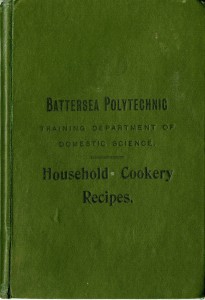As part of our project looking into the history of the Battersea Polytechnic Recipe books, following on from our highly popular look into the history of the recipe book in our earlier blog, we have decided to dive into the cookbooks once again.
This time the aim is to take you inside the recipe books, – behind the green cover. The intention is to see how relevant these books are to us today. We all love hearing about the strange and weird foods our predecessors ate – like the brain cakes!- but actually how much of these books can be useful to us today.
Even the weird and wonderful recipes in the books could be tasty, right!?
This is why I chose to pick a recipe at random and give it a go and report back on my discoveries.
The recipe selected was something called ‘Arrowroot Pudding’. Sounds absolutely delicious I hear you all cry!
This recipe is something that I have never heard of and therefore the perfect test
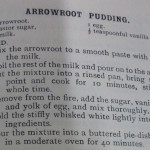
So how easy was it to make?
Surprisingly easy, and the recipe used very little ingredients – very much falling into the frugal and economic cookery category – all it required was arrowroot, sugar, egg, milk and vanilla essence. The first task was to boil the milk and then add to a paste made of the arrowroot – very much how you’d make custard using powder – then boil again, adding the egg and baking in the oven.
Seems simple, what could possibly go wrong.
Well the instructions are somewhat spare – very much how they would be in the ‘technical challenge’ in the Bake Off, so you really need some sort of cooking and baking knowledge. The biggest issue encountered while making this pudding was the fact that it rose in the oven – a lot! – and made a complete mess of the oven. (One thing I very much take for granted in modern recipes is the fact that they tell you what sized baking dish you should use!) These issues aside, all in all it was very easy to make.
The proof is in the pudding or tasting.
The first real issue when it came to tasting was the fact that it sunk, very quickly, when it was taken out from the oven which was a bit disappointing. It also didn’t thicken up as much as I thought it would, especially considering arrowroot is used as a thickening agent in sauces.
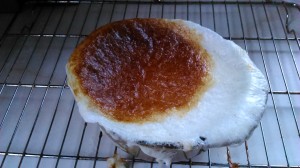
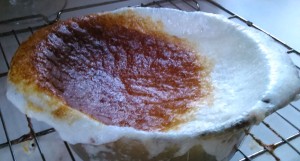
When it came to tasting it, it very much tasted like sweetened milk, which isn’t on the whole horrible – if you like drinking milk.
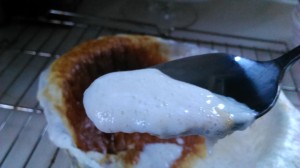
However the look of it really wasn’t the most appealing thing, and they do say that we eat with our eyes. But this could just be my bad cookery skills that led it not to work correctly.
So realistically it is not something that I am going to rush out and try to make again!
Are you a keen cook/baker? Would you like to help us out?
We are looking for keen volunteers for this project who are willing to roll up their sleeves and give one of our recipes a go. And feature in our blog, writing up about your ‘experiences’. Please email us archives@surrey.ac.uk for more information.

